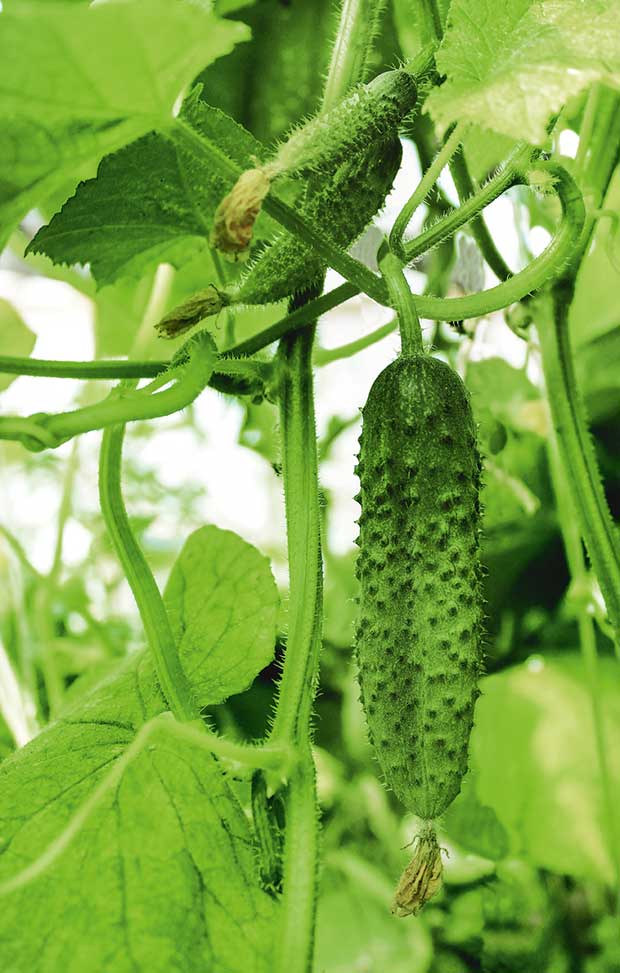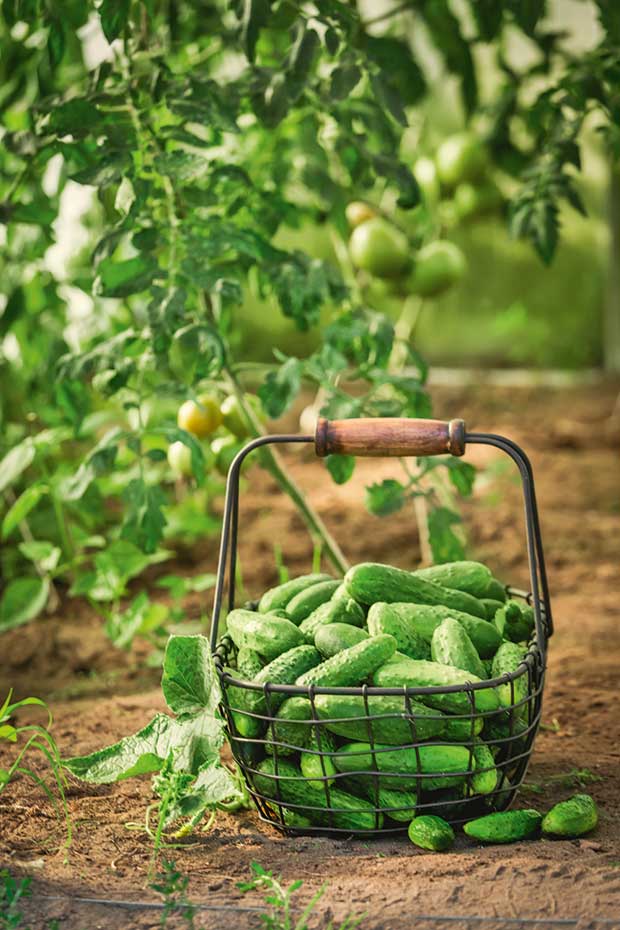10 tips to growing cucumbers (hint: they hate frost and love fertiliser)

While cucumbers come in different shapes and sizes, their garden preferences are nearly identical.
Words: Jane Wrigglesworth
Cucumbers can be round, oval or sausage-shaped; short, fat, long or skinny; green, yellow or white.
They can even be golden brown, like the Indian heirloom variety, Poona Kheera, now available from Kings Seeds.
Flavours may be sweet or bitter. ‘Burpless’ varieties contain low or no cucurbitacin. This compound causes bitterness and increases your susceptibility to burping after eating them (says the Burpee seed catalogue).
There are two basic cucumber types: slicers and picklers. The slicers are typically eaten fresh, although you can make pickles from them too, such as the famous bread and butter pickles. Pickling varieties, or gherkins, tend to be shorter and have a bumpy skin. They also have smaller and fewer seeds.

There are two basic types of cucumber: slicers and picklers.
All cucumbers, no matter their size, shape or colour, have similar likes and dislikes in the garden.
1. Choose an area in full sun and dig it over deeply. Cucumbers are deep-rooted, so the deeper you dig to loosen the soil, the better.
2. Add plenty of compost and fertiliser.
3. If your soil is acidic, adding lime might be worthwhile, although it’s best applied to soil one season before you want to plant.
4. Avoid planting your cucumbers in an area where cucurbit family members (cucumbers, zucchini, pumpkins, melons) grew the previous year as diseases may carry over from one year to the next.
5. Cucumbers grow as vines, so you can grow them up tepees or trellis, or trail them along the ground.
6. Cucumbers are warm-season crops and don’t like frost. Don’t plant out seedlings until after frosts have finished.
7. Seeds won’t germinate in soil that’s below 10°C. Speedy germination takes place when soil temperatures are around 15°C. If your soil is still on the cool side, plant in containers for transplanting later.
8. Ideal temperature for growth and development is around 18-24°C. Growth is checked when temperatures dip below 16°C, so use a cloche in the early stages, or lay a mulch of black plastic to warm the soil.
9. Make sure you water and feed plants well during the growing season. A regular watering regime can mean the difference between an ok-crop and an amazing one. Whip off the black plastic in summer and apply an organic mulch to help retain moisture.
10. As your plants grow, prune the lateral shoots near the base to promote a higher yield. Trim the first 4-6 shoots then leave anything above this to grow.
Love this story? Subscribe now!
 This article first appeared in NZ Lifestyle Block Magazine.
This article first appeared in NZ Lifestyle Block Magazine.
